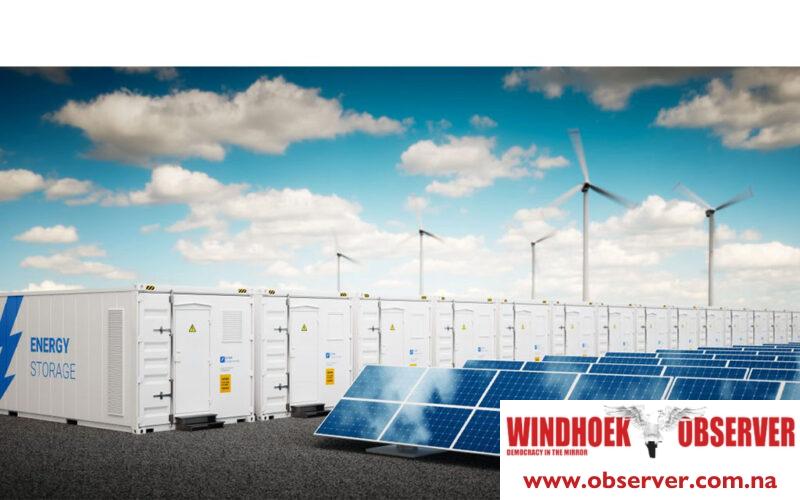Niël Terblanché
Namibia is rapidly emerging as a leader in the green hydrogen industry, with eight active projects that are set to transform the nation’s energy landscape and position it at the forefront of global green energy initiatives.
These projects, which include Hyphen Hydrogen Energy, Elof Hansson, HDF Energy, HyIron, Zhero, Cleanergy Solutions, Daures Hydrogen Village, and Hyrail, are developing essential production infrastructure across the country, from wind and solar farms to electrolysis facilities and desalination plants.
According to James Mnyupe, Namibia’s Green Hydrogen Commissioner, the heart of this green revolution is the Hyphen Hydrogen Energy project, strategically located in the Tsau //Khaeb National Park near Lüderitz.
Mnyupe said this project is the largest and most significant among the country’s green hydrogen initiatives.
“These government-backed initiatives are a clear demonstration of Namibia’s commitment to green energy,” he said.
According to Mnyupe, the Hyphen project alone has already employed over 400 individuals and invested approximately N$170 million into small and medium-sized enterprises (SMEs) for essential services.
“The Hyphen project has reached several critical milestones, including the completion of pre-FEED (Front-End Engineering Design) engineering and the installation of 10 meteorological masts essential for data collection,” he said.
Mnyupe added that this project has garnered significant global interest, with Memorandums of Understanding (MoUs) signed to supply over 1 million tonnes of green ammonia annually, which is a demonstration of Namibia’s growing role in the international green energy market.
He said other projects are also making substantial progress.
HyIron, scheduled to receive Namibia’s first green iron kiln in September 2024, aims to produce 15 000 tonnes of direct reduced iron (DRI) each year, setting a new standard in green industrialisation. Cleanergy Solutions is on track to commence green hydrogen production by the fourth quarter of 2024, with 80% of the project already completed.
“Meanwhile, the Daures Green Hydrogen Village, nearing completion, is expected to start producing green hydrogen and ammonia by the end of 2024,” he said.
International partnerships are pivotal to the success of Namibia’s green hydrogen projects. A Joint Communiqué of Intent with Germany has secured €30 million in grants for pilot projects, highlighting Namibia’s growing global cooperation in this sector.
According to Mnyupe, collaborations with universities and research institutions are driving innovation while also ensuring that these initiatives are successfully implemented.
He said that local SMEs and consultancies are also playing a crucial role in tailoring solutions to Namibia’s unique conditions, while international donors, including those from the Netherlands, Germany, and the European Union, alongside technical assistance from the World Bank and UNIDO, continue to provide essential support.
“Infrastructure development is progressing at a rapid pace,” he said.
Plans for storage, distribution networks, and port facilities at Lüderitz and Walvis Bay are underway, preparing Namibia for large-scale hydrogen exports.
According to Mnyupe, the green hydrogen sector is expected to create substantial employment opportunities, with the Hyphen project alone anticipating the need for 15 000 workers during construction and 3 000 permanent employees thereafter.
He added that economic modelling suggests the sector could generate up to 250 000 jobs by 2040, providing a significant boost to Namibia’s economic growth.
Namibia’s green hydrogen initiatives are being developed with a strong emphasis on environmental sustainability.
The projects adhere to strict environmental standards, including a Strategic Environmental and Social Assessment (SESA), to ensure minimal ecological impact.
International standards set by the International Finance Corporation guide the projects, guaranteeing both environmental and social sustainability.
“Private sector investment is driving the green hydrogen projects, with the Namibian government holding a 24% stake in key projects like Hyphen Hydrogen Energy, funded by grants,” Mnyupe added.
He said that the sector anticipates up to US$40 billion in potential investments, fueled by green industrialisation and supported by necessary infrastructure developments such as rail and port expansions.
“Although logistical challenges might arise from remote project locations and a nascent industry, these situations will be addressed through local workforce training and the timely arrival of essential equipment,” he said.
Mnyupe said Green Hydrogen is central to Namibia’s broader energy strategy and plays a pivotal role in the country’s transition to a sustainable energy economy.
He said that the sector is expected to significantly reduce Namibia’s carbon dioxide (CO2) emissions, potentially by up to 75 million tonnes per year by 2040, far exceeding the country’s current emissions.
Mnyupe also indicated that Namibia is in full preparation to host the Global African Hydrogen Summit from 3 to 5 September in Windhoek.




